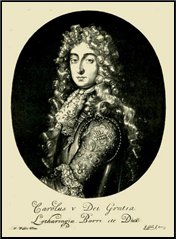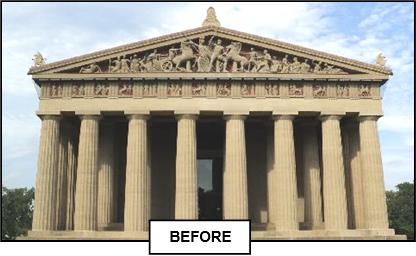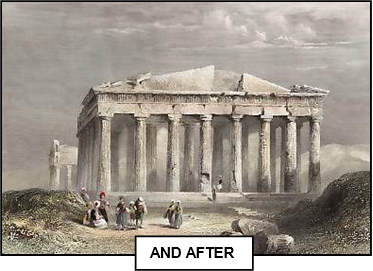


THE SECOND BATTLE OF MOHACS 1687 (J2)
Acknowledgements
Charles of Lorraine: engraving by the Dutch printmaker Jacob Gole (c1660-
Including:
The Parthenon

xxxxxAs we have seen, the defeat of the Ottoman Turks at the Battle of Kahlenberg in 1683 (C2) led to a counter offensive. The Austrians defeated the Turks at the Second Battle of Mohacs in 1687, and the Venetians, taking advantage of the situation, invaded Greece and bombarded and captured Athens. In the taking of city, however, the Temple of Athena Parthenos (The Parthenon), a magnificent example of Doric architecture dating back to the 5th century BC, was almost completely destroyed.
 xxxxxAs we have seen, the failure of the Ottoman Turks to take the city of Vienna following their defeat at the Battle of Kahlenberg in 1683 (C2), opened the way for a counter offensive. The Holy League was formed between Austria, Poland and Venice (and supported by Russia) with the aim of recapturing areas of eastern and central Europe. Overxthe next four years, Charles of Lorraine (1643-
xxxxxAs we have seen, the failure of the Ottoman Turks to take the city of Vienna following their defeat at the Battle of Kahlenberg in 1683 (C2), opened the way for a counter offensive. The Holy League was formed between Austria, Poland and Venice (and supported by Russia) with the aim of recapturing areas of eastern and central Europe. Overxthe next four years, Charles of Lorraine (1643-
xxxxxIn the meantime, the Venetians, heartened by the obvious downturn in Ottoman fortunes, and encouraged by the pope, set out to re-
 xxxxxSadly, the Venetian attack on Athens, involving as it did the bombardment of the city, resulted in the almost complete destruction of the magnificent Temple of Athena Parthenos (The Parthenon), which had been completed on the Acropolis (a raised citadel) in 438 BC. Dedicated to Athena, the warrior maiden, it was a perfect example of Doric architecture, and a masterpiece of Greek design and sculpture.
xxxxxSadly, the Venetian attack on Athens, involving as it did the bombardment of the city, resulted in the almost complete destruction of the magnificent Temple of Athena Parthenos (The Parthenon), which had been completed on the Acropolis (a raised citadel) in 438 BC. Dedicated to Athena, the warrior maiden, it was a perfect example of Doric architecture, and a masterpiece of Greek design and sculpture.
xxxxxEarlier, after the Turks had captured Athens in 1458, the Parthenon, then housing the Church of St. Mary, was soon converted into a mosque, and a minaret was erected in the south west corner. Later, however, it was used to store a gunpowder magazine and this proved fatal. When the Venetians arrived to capture the city in 1687, the Parthenon and other temples on the Acropolis were much in their original form, but when the bombardment of the city began -
bombardment of the city began -
xxxxxAs it so happened, the success achieved by Venice in their invasion of Greece proved of little real value. Indeed, so expensive did it become to maintain some of this newly-
xxxxxThe Parthenon, a perfect example of Doric architecture, was built on the Acropolis, the raised city in Athens, in 438 BC. Dedicated to Athena, the warrior maiden, and known as the Temple of Athena Parthenos, it was a masterpiece of Greek design and sculpture. When the Turks captured Athens in 1458, the Church of St. Mary which it housed was converted into a mosque and a minaret erected in one corner. However, by the time the Venetians invaded Greece and attacked the city in 1687, the building was being used as a gunpowder store. Receiving a direct hit from the Venetian artillery, the ancient temple was almost completely destroyed. Beyond hope of repair, when the Turks returned to the city the following year they saw no use for it and, later, began to sell off pieces of the ruins as souvenirs. As we shall see, one willing buyer was to be the British diplomat the Earl of Elgin. In 1802 he began shipping out what came to be known as the Elgin Marbles and by 1812 (G3c) had taken his entire collection to England.
J2-


